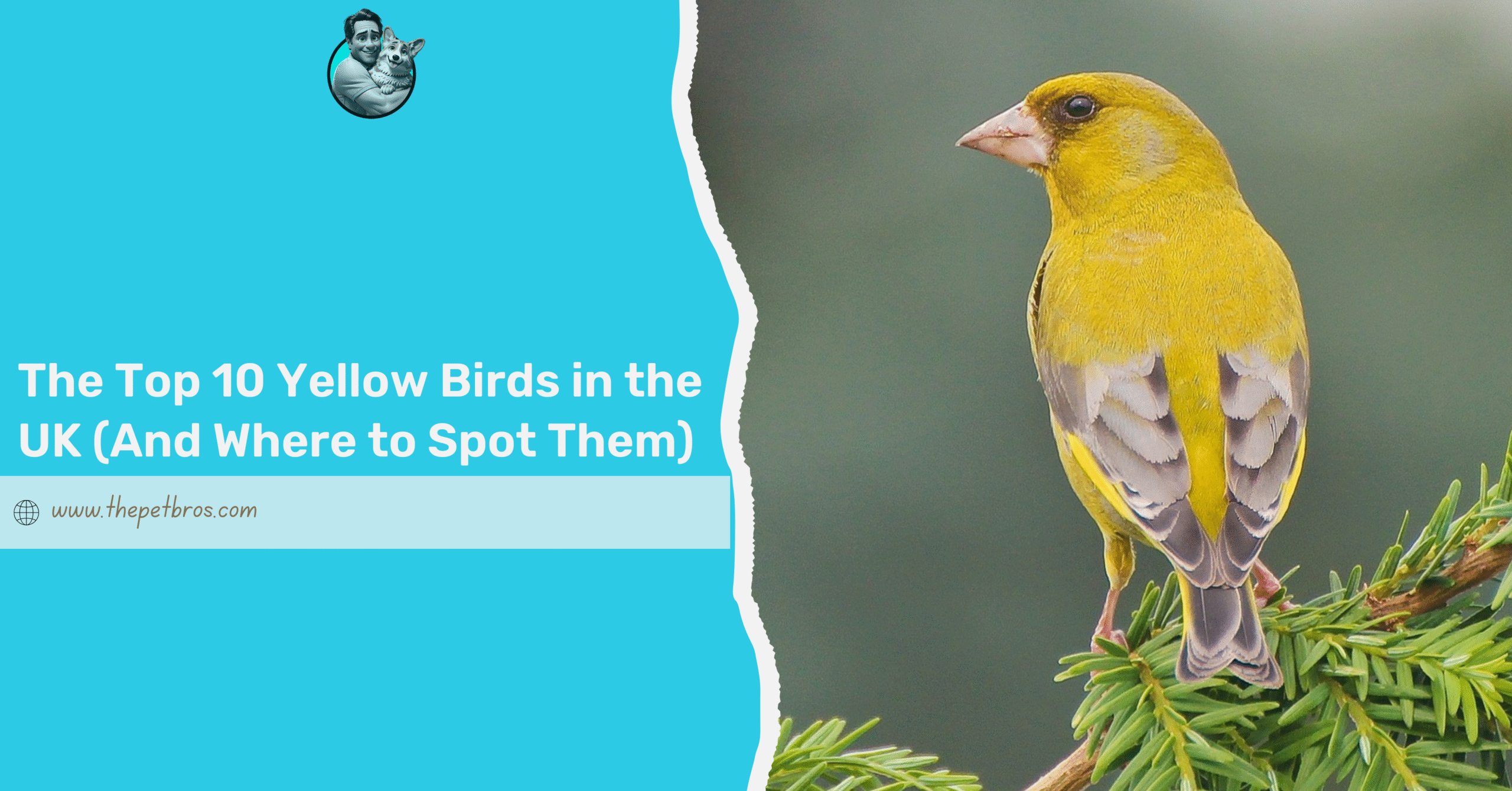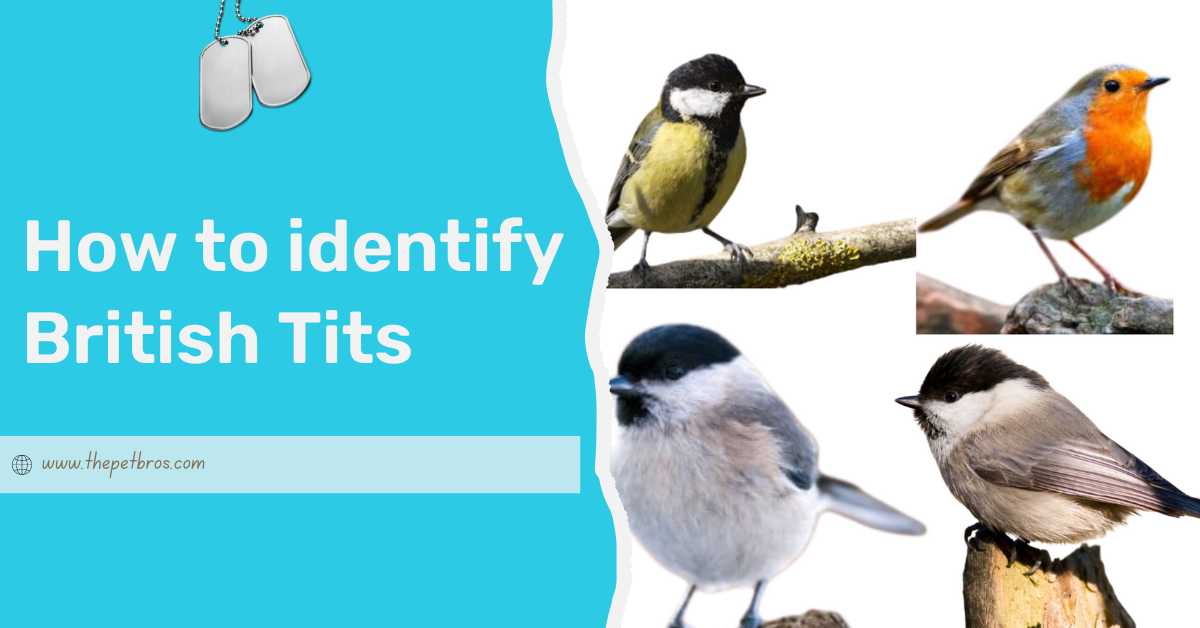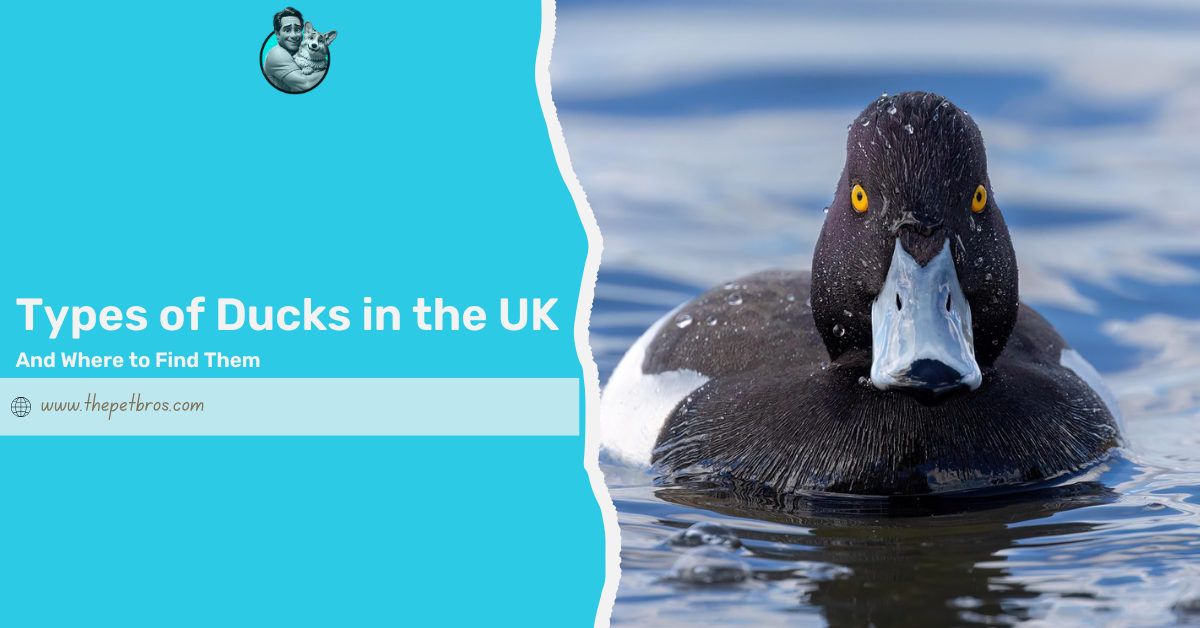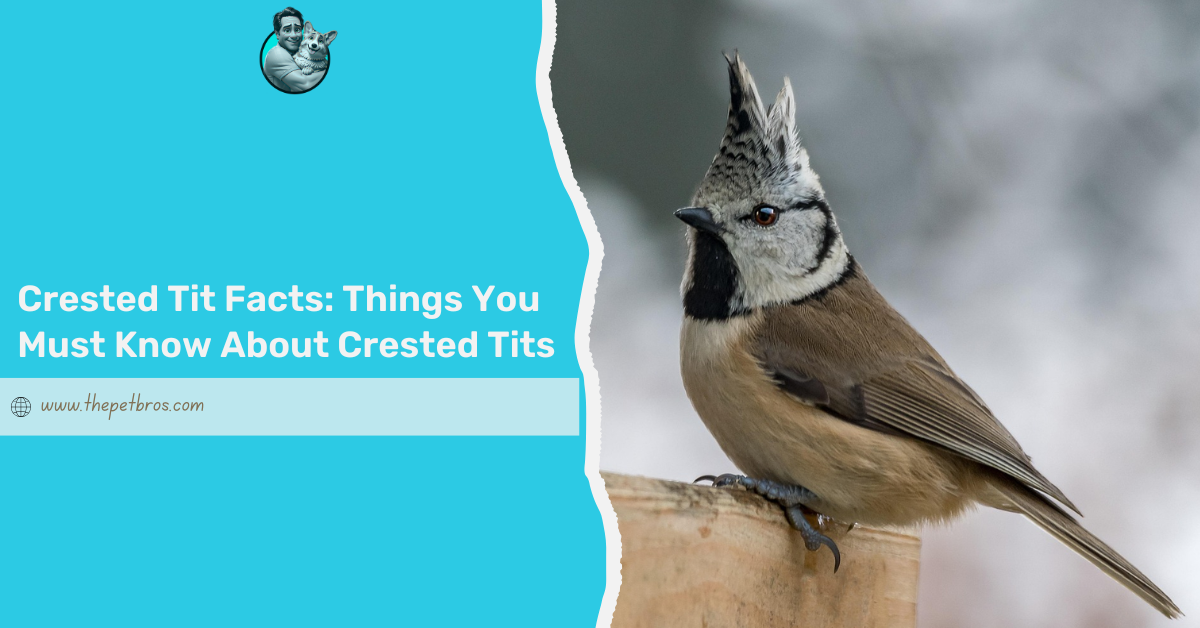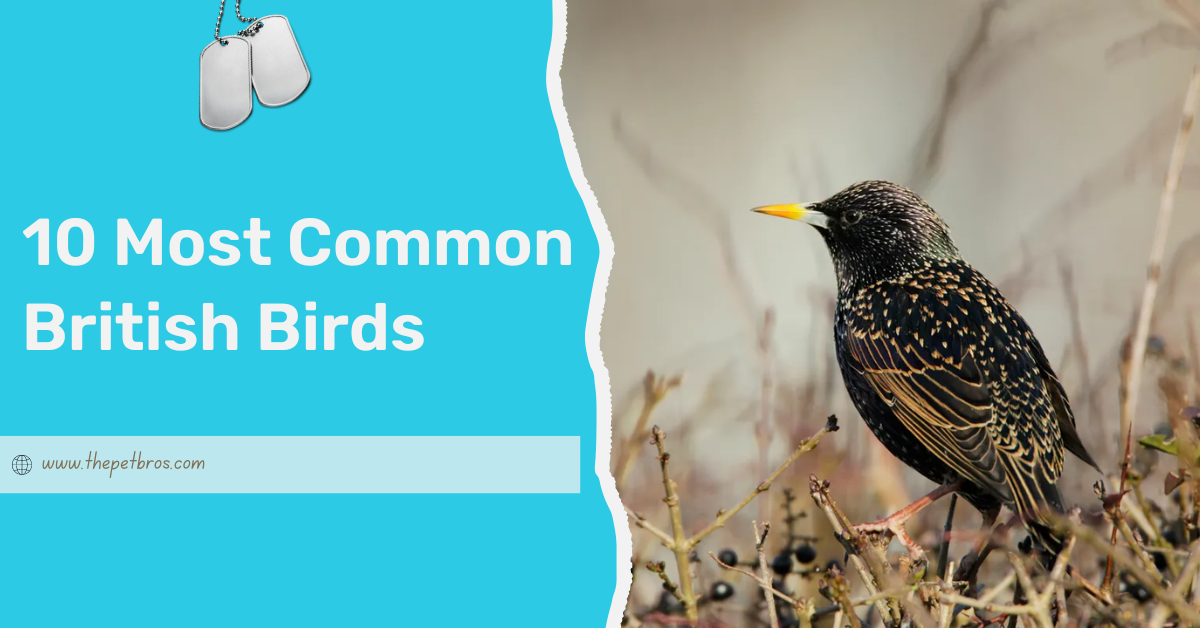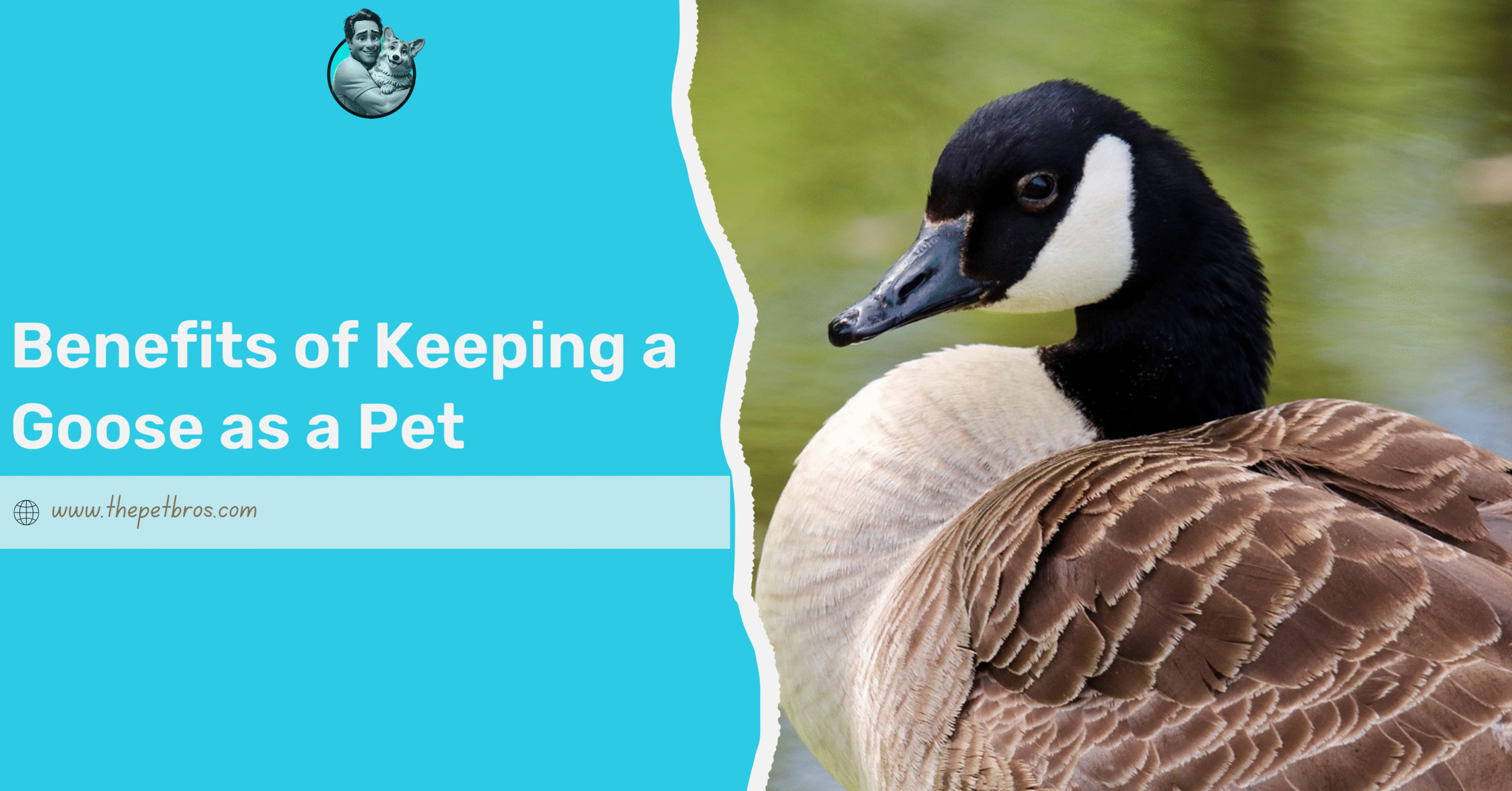When you think of colourful birds, what comes to mind? Chances are, one of the yellow birds in the UK is at the top of your list. With their bright feathers and cheerful personalities, these little sunshine-filled creatures are hard to miss and impossible not to love.
If you’re lucky enough to spot one of these golden beauties, you’re in for a treat because when you think of the cheeky Goldfinch that flutters by your garden or the rare Golden Pheasant that pops up in woodland, you realise that yellow birds are some of the most stunning and unique species in the UK.
In this article, we’ll talk about the top 10 yellow birds in the UK, detailing their unique features, habitats, and where you’re most likely to spot them.
1. Goldfinch
- Appearance: Bright red face, yellow wings, and black markings.
- Common Habitats: Garden feeders, urban areas.
- Fun Fact: Known for their cheerful, twittering calls.
- Population Status: Least Concern.
The first on our list of the top 10 yellow birds in the UK is the Goldfinch bird. The Goldfinch is often described as the most artistic of all the UK’s birds. In the 18th and 19th centuries, goldfinches were commonly kept in cages, admired for both their appearance and melodious voices. You can come across them in poems and paintings symbolising joy and nature’s delicate beauty. In Christian art, the Goldfinch was also associated with resurrection and the soul, likely due to its radiant coloring and melodic song.
Goldfinches are highly sociable and often travel in loose, twittering flocks known as “charms.” They’re agile flyers, constantly weaving and dipping in a way that looks both playful and precise. During the breeding season, you’ll spot pairs performing courtship displays, fluttering side-by-side as if dancing in the air.
If you’re looking to attract goldfinches to your garden, consider adding a nyjer seed feeder, which they love. These birds also appreciate wild patches with dandelions and teasels. They tend to be most visible in late summer and autumn, when they gather in numbers before winter.
2. Siskin
- Appearance: Yellow and green streaked body, black bib, and forked tail.
- Common Habitats: Scotland, Wales, and migrating to England in winter.
- Fun Fact: Sociable birds that are often seen in flocks around feeders.
- Population Status: Least Concern.
Don’t let its small size fool you, the Siskin is one of the liveliest and energetic little birds flitting around the UK. They are often seen hanging upside down from branches like feathered gymnasts, expertly plucking seeds mid-sway. While not as commonly featured in folklore, the siskin has long been admired by birdwatchers for its vibrant plumage and bold demeanour. In older Scottish dialects, they were sometimes referred to as the “black-headed lintie.”
Siskins are acrobatic when feeding, especially on alder and birch trees, where they balance precariously to reach seeds. They form large, chattery flocks in winter, buzzing through woodlands and gardens alike with restless energy. Their call is a scratchy, chattering song often delivered in flight.
If you hear a series of rising “tsee-tsee-tsee” sounds overhead in late winter, chances are a group of siskins is passing through. To attract siskins, just stock up on sunflower hearts or nyjer seeds.
3. Yellow Wagtail
- Appearance: Bright yellow body with a long, wagging tail.
- Common Habitats: Wetlands, grasslands, and agricultural land.
- Fun Fact: Migrates to Africa in winter, returning in spring.
- Population Status: Red List (due to habitat loss).
By nature, the Yellow Wagtails are restless. They are always on the move, and as their name suggests, they constantly wag their tails. They do this as if they’re keeping tempo with their own internal metronome. They often follow livestock in open pastures, darting around their hooves to catch disturbed insects. It’s a clever tactic that highlights their opportunistic, adaptable nature.
The Yellow Wagtails’ call is a crisp, double-syllable “tsweep-tsweep” sound, which you most likely hear during flight. During the breeding season, males may offer a more melodic, warbling song to attract a mate, though it’s short and sweet compared to many other songbirds.
You’re more likely to find yellow birds in the UK like the Yellow Wagtails in open fields or wetlands than in back gardens. However, if you live near farmland, you might catch one skimming through during migration. They prefer low, moist areas, especially those with cattle or horses.
4. Great Tit
- Appearance: Bold yellow chest, black head, and white cheeks.
- Common Habitats: Gardens, woodlands, and parks.
- Fun Fact: Known for its aggressive behaviour around feeders.
- Population Status: Least Concern.
Larger than most garden birds and full of poise, the Great Tit is the feathered equivalent of a frontman in a band. It is bold, loud, and always ready to make an impression. The Great Tit is the ultimate vocal mimic. It features a vast array of calls, comprising more than 10 distinct notes. Its most familiar call sounds like a squeaky “teacher-teacher,” often used to claim territory or attract a mate.
The Great Tits are frequent garden visitors, especially if you offer peanuts, fat balls, or sunflower seeds. Hanging feeders near shrubs or small trees will give them a safe spot to retreat between visits.
5. Blue Tit
- Appearance: Blue and yellow plumage with a white face stripe.
- Common Habitats: Gardens, woodlands, parks.
- Fun Fact: Highly social, often seen in flocks during the winter.
- Population Status: Least Concern.
If the Great Tit is the confident charmer, then the Blue Tit is its sprightly sidekick, smaller, bouncier, and arguably even more charismatic. With its vivid mix of blue, green, yellow, and white, the Blue Tit looks like something out of a children’s storybook. And it acts the part too, always in motion, always curious.
Blue Tits have endeared themselves to the British public for decades. This was after the famous 20th-century incident, when they learned to pierce foil milk bottle tops to steal the cream. Their call is a soft, high-pitched “tsee-tsee” with a bubbly song that rises and falls rapidly. It’s especially noticeable in spring, when males serenade prospective mates with their quirky, chirpy tunes.
Blue Tits are a garden staple and love fat balls, peanuts, and mealworms. Installing a nest box might encourage them to raise a family in your garden. Look for them flitting in and out with nesting materials in early spring.
6. Firecrest
- Appearance: Yellow stripe on head, with a striking red crest.
- Common Habitats: Woodland areas, especially in the south of England.
- Fun Fact: One of the smallest UK birds.
- Population Status: Least Concern.
This list of yellow birds in the UK is undoubtedly incomplete without the Firecrests. Firecrests are restless, energetic, and always on the move. They hover like hummingbirds as they pick insects off leaves, rarely staying in one spot for long. Despite their size, they’re feisty and highly territorial during the breeding season, often chasing off rivals with surprising boldness.
Their call is a high, thin “zee-zee-zee.” It is almost too faint for human ears, especially as we age. It’s a repetitive series of delicate notes that rise and fall, often mistaken for Goldcrest’s song. Rarely a garden bird, but in southern England, especially in winter, you might spot one darting through dense evergreen shrubs or conifers. If you’re lucky enough to see one, watch closely.
7. Golden Oriole
- Appearance: Vivid yellow plumage with black wings.
- Common Habitats: Woodlands near water.
- Fun Fact: Rarely seen, preferring high tree canopies.
- Population Status: Least Concern
With its vivid yellow plumage and flute-like call, the Golden Oriole seems like it belongs in a tropical jungle more than a British woodland. For many birdwatchers, spotting one is a lifetime achievement. In Roman mythology, the bird was associated with transformation and rebirth. In modern Britain, they’re something of a cult favourite among birders.
Golden Orioles are shy and incredibly secretive. They prefer to stay hidden high in the tree canopy. Despite their bright colour, they’re surprisingly good at staying out of sight. During the breeding season, they are cautious but attentive parents.
Their call is one of the most hauntingly beautiful in the bird world. It’s simply a mellow, whistled “weela-wee-ooo.” You’re unlikely to see a Golden Oriole in a garden. However, in East Anglia or Kent during spring migration, keep an eye on tall poplars or orchards.
8. Yellowhammer
- Appearance: Bright yellow head and chest with brown streaks on the back.
- Common Habitats: Farmlands, hedgerows, and open countryside.
- Fun Fact: They are known for their melodic song, especially in spring.
- Population Status: Red List (due to population decline).
The Yellowhammer is a countryside classic, instantly recognisable with its canary-yellow head and tail. They were once called “scribble larks” because their eggs have dark, chaotic lines that look like they’ve been written on with a pen. Males are quite territorial in spring and will perch proudly on exposed branches to belt out their familiar tune. Outside breeding season, they join flocks and feed communally.
That bread-and-cheese phrase really does match their song: a repetitive series of short notes ending with a slightly longer one. It’s heard most often on sunny mornings in spring and summer, carrying clearly across open land.
If you live near farmland, you can attract Yellowhammers with grain or mixed seed scattered on the ground. They’re not as fond of hanging feeders, so tray feeders or even a clean patio space can work best.
9. Cirl Bunting
- Appearance: Yellow with black chin and eye stripe, streaked back.
- Common Habitats: Devon, near farmland.
- Fun Fact: Once nearly extinct in the UK, thanks to conservation efforts, their numbers are increasing.
- Population Status: Least Concern.
Once nearly extinct in Britain, the Cirl Bunting is a true conservation success story. With its olive-yellow plumage and distinctive facial stripes, this bird is a regional gem, mainly found in the rolling countryside of south Devon.
Cirl Buntings are homebodies. Unlike many migrant birds, they stick close to their breeding grounds all year round. Males sing from hedgerow perches during the breeding season, while females quietly forage below. They love to feed on insects in summer and seeds in winter.
Their song is dry, but still charming in its rustic way. It often blends into the background unless you’re listening closely on a quiet morning. These birds are unlikely garden visitors unless you live in their stronghold areas near south Devon. If so, planting wildflowers and leaving patches of long grass can provide crucial insect food for chicks.
10. Golden Pheasant
- Appearance: Golden yellow plumage with a red breast and yellow tail feathers.
- Common Habitats: Forests, wooded areas, and game reserves.
- Fun Fact: They are known for their striking and colourful appearance.
- Population Status: Least Concern (but very rare).
Lastly, we have the Golden Pheasant. If birds held fashion shows, the Golden Pheasant would headline. Despite its flamboyant look, the Golden Pheasant is surprisingly shy and reclusive. It spends much of its time skulking in undergrowth, foraging for seeds and insects. Males may strut during the breeding season, fanning out their hoods in a spectacular courtship display.
Their calls are low, clucking notes, almost chicken-like, and they’re not especially vocal. During mating season, males may let out a sharp “chee-kow” sound to attract a mate or warn off rivals. Unless you live near one of their small colonies, you’re unlikely to find one in your garden. But if you do, consider it a rare privilege. They prefer woodland edges with thick cover, especially places that mimic their original forest homes.
So, What Now? Time to Spot Some Yellow Birds in The UK!
Whether you’re deep in the countryside, strolling through a city park, or simply gazing out of your kitchen window, the yellow birds in the UK are never too far away. Well, if you know where and how to look.
These birds are indicators of a healthy environment. So next time you catch a flash of yellow or a cheerful trill, pause and look a little closer. You might just be witnessing one of nature’s most dazzling moments.
Frequently Asked Questions
What’s the best time of year to spot yellow birds?
Spring and summer are the best times, but some birds like the Goldfinch can be spotted year-round.
How can I attract yellow birds to my garden?
Offer sunflower seeds, thistle, and nyjer seed. A birdbath and native plants can also help attract them.
Are there any endangered yellow birds in the UK?
Yes, the Yellow Wagtail is a species of concern due to habitat loss.
How can I tell the difference between a Yellowhammer and a Yellow Wagtail?
The Yellowhammer has a streaky body, while the Yellow Wagtail is bright yellow with a long tail.






